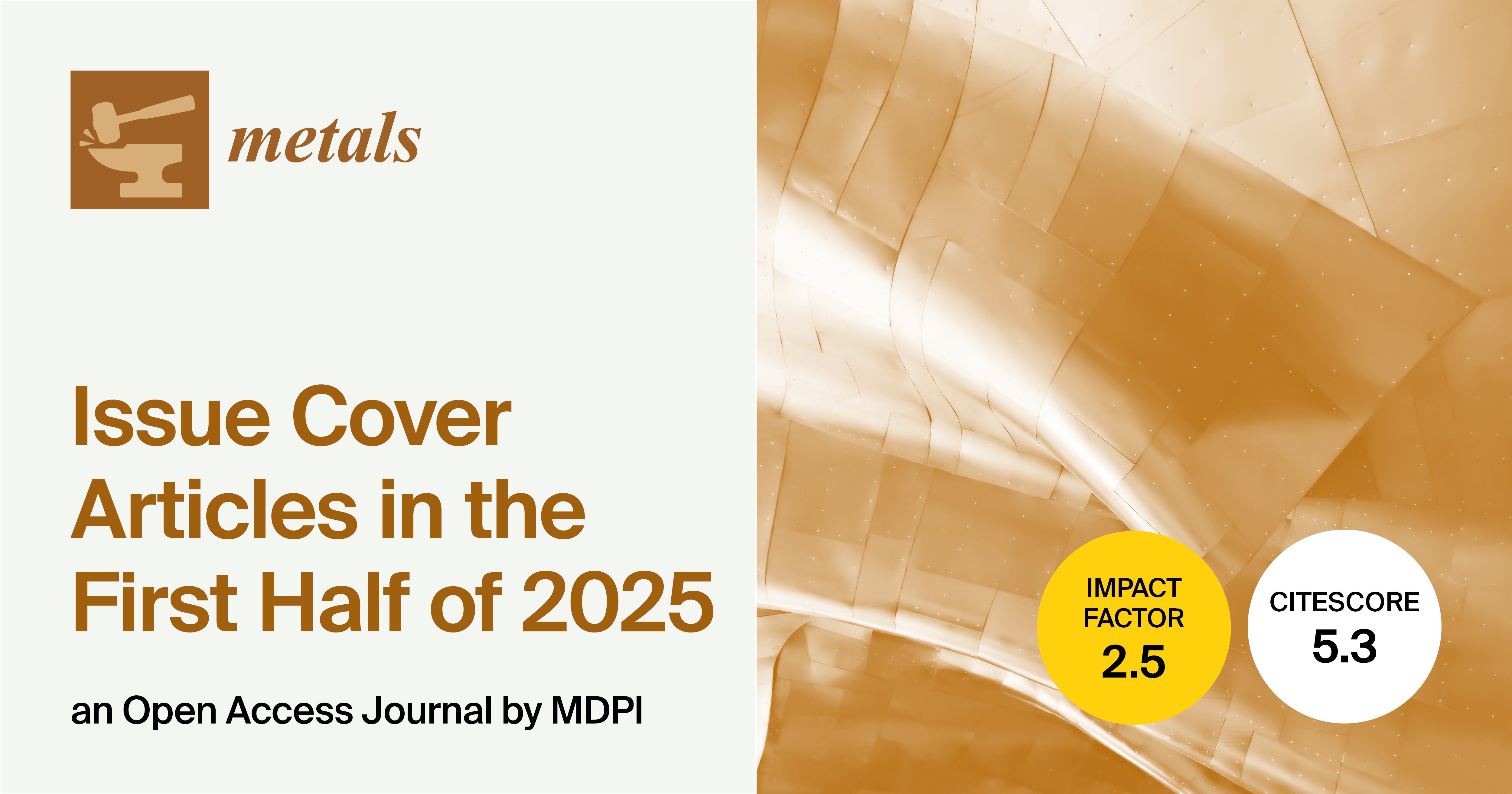Need Help?
21 October 2025
Metals | Issue Cover Articles Published in the First Half of 2025

The articles below have been selected as the first half of 2025 Issue Cover Articles by the Editorial Office of the Metals (ISSN: 2075-4701). These articles are from multiple fields within the scope of the Metals, and we hope they can provide insights and references for scholars in related fields. To access more journal volume information, please click on the following link: https://www.mdpi.com/2075-4701/15.
|
|
1. “The Shear Bond Strength of Porcelain Bonding to Cobalt–Chromium Dental Alloys Before and After Thermal Cycling” |
|
|
2. “Texture Analysis of Inconel 718 with Different Modes During Single-Track Laser Surface Re-Melting” Cover Story: Understanding texture formation in melt pools allows for the modification of the surface-layer microstructure and corresponding material properties, providing an opportunity to integrate laser surface re-melting into metal additive manufacturing. Assisted by recently developed real-time temperature monitoring techniques, namely laser surface re-melting and EBSD, this study investigates the fundamental relationship between cooling rate and crystallographic texture formation in single melting tracks on the Inconel 718 plate. The results imply that laser surface re-melting could modify the surface structure from a random grain orientation to a crystallographically layered structure. |
|
|
3. “Influence of Recoater Speed on Powder Bed and Part Quality in Powder Bed Fusion of Metals Using a Laser Beam” Cover Story: In this work, a powder test rig that mimics the real flow conditions of a PBF-LB/M system is used to measure the quality of X3NiCoMoTi18-9-5 powder layers applied at different recoater speeds by determining powder surface roughness. The same recoating settings are then used on a real PBF-LB/M system to produce samples and investigate their densities depending on the recoater speed. The results show that the recoater speed influences the surface of the applied powder bed and has an effect on the density of the manufactured samples. This influence decreases if only high-density samples are considered. |
|
|
4. “Optimized and Additively Manufactured Face Mills for Enhanced Cutting Performance” Cover Story: This study examines topology optimization and the laser powder bed fusion of face mills with experimental modal characteristics and cutting performance. The aim was to decrease the vibration magnitudes of full tool assembly while keeping them stiff against deformation due to cutting forces. Three distinct designs were benchmarked, each with different weight reduction targets, and were fabricated using PBF-LB with M300 maraging steel. Tap tests and the machining of wrought Ti6Al4V were conducted to compare the developed tools. The advantages of utilizing optimized tools highlighted an extension of the insert tool life and successfully reduced flank wear to 100 µm after one hour of Ti6Al4V machining. |
|
|
5. “Production of ZnO Nanofibers from Zinc Galvanizing Flue Dust” Cover Story: This work focuses on the production of ceramic nanofibers from waste materials, which represents a significant contribution to the sustainable use of resources and innovative solutions in the field of nanotechnology. The research builds on existing knowledge of nanofiber production, with a specific focus on the use of zinc galvanizing flue dust. The main objective of the study is to explore the possibilities of converting zinc-containing waste materials into ceramic nanofibers, introducing a new direction in nanotechnology. Laboratory experiments involved leaching processes and electro-static spinning processes of zinc solutions. This study also examines the influence of contaminants from real waste solutions on the production of ceramic nanofibers and compares their properties with nanofibers obtained from synthetic solutions. |
|
|
6.“Oxide Behavior During Laser Surface Melting” Cover Story: Oxides are produced and changed during metal additive manufacturing. We evaluated different contributions to oxide deposition in laser powder-bed fusion and found that direct oxidation of the melt pool has a minor effect and that ejected hot spatter droplets oxidize as they travel through the printer atmosphere. The backscattered electron micrograph revealed the presence of oxides as dark spots on the surface of a laser-remelted Inconel 718 sample. |







